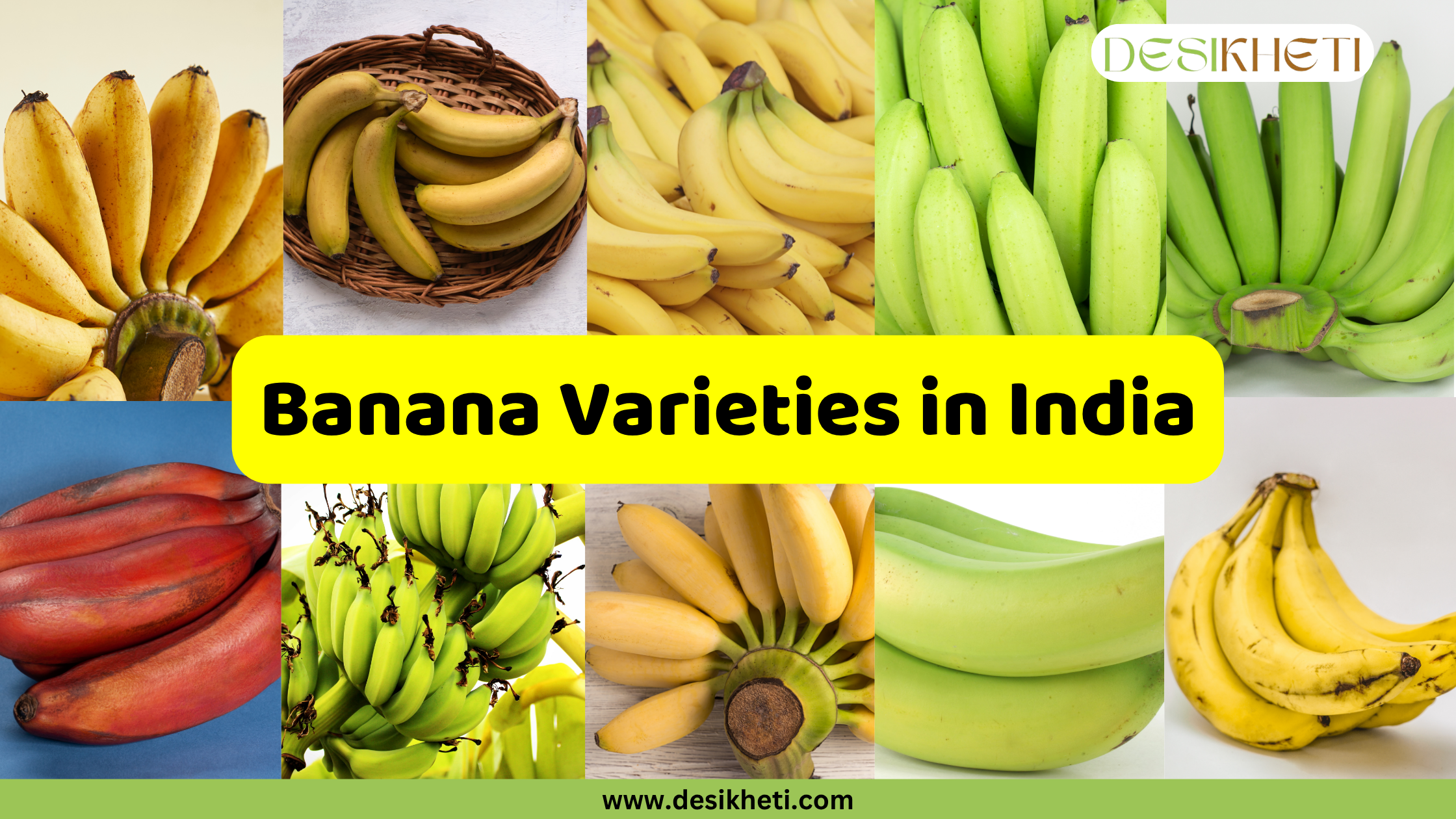Table of Contents
Introduction
Bananas are among the most popular and widely consumed fruits across India, cherished not only for their delicious taste but also for their versatility in cooking and cultural significance. India boasts a diverse range of banana varieties, each with unique characteristics, flavors, and uses.
In this blog, we explore the top 10 best banana varieties found in India, including their local names, cultivated regions, and common uses.
Top 10 Banana Varieties in India
Chakkarakeli Banana
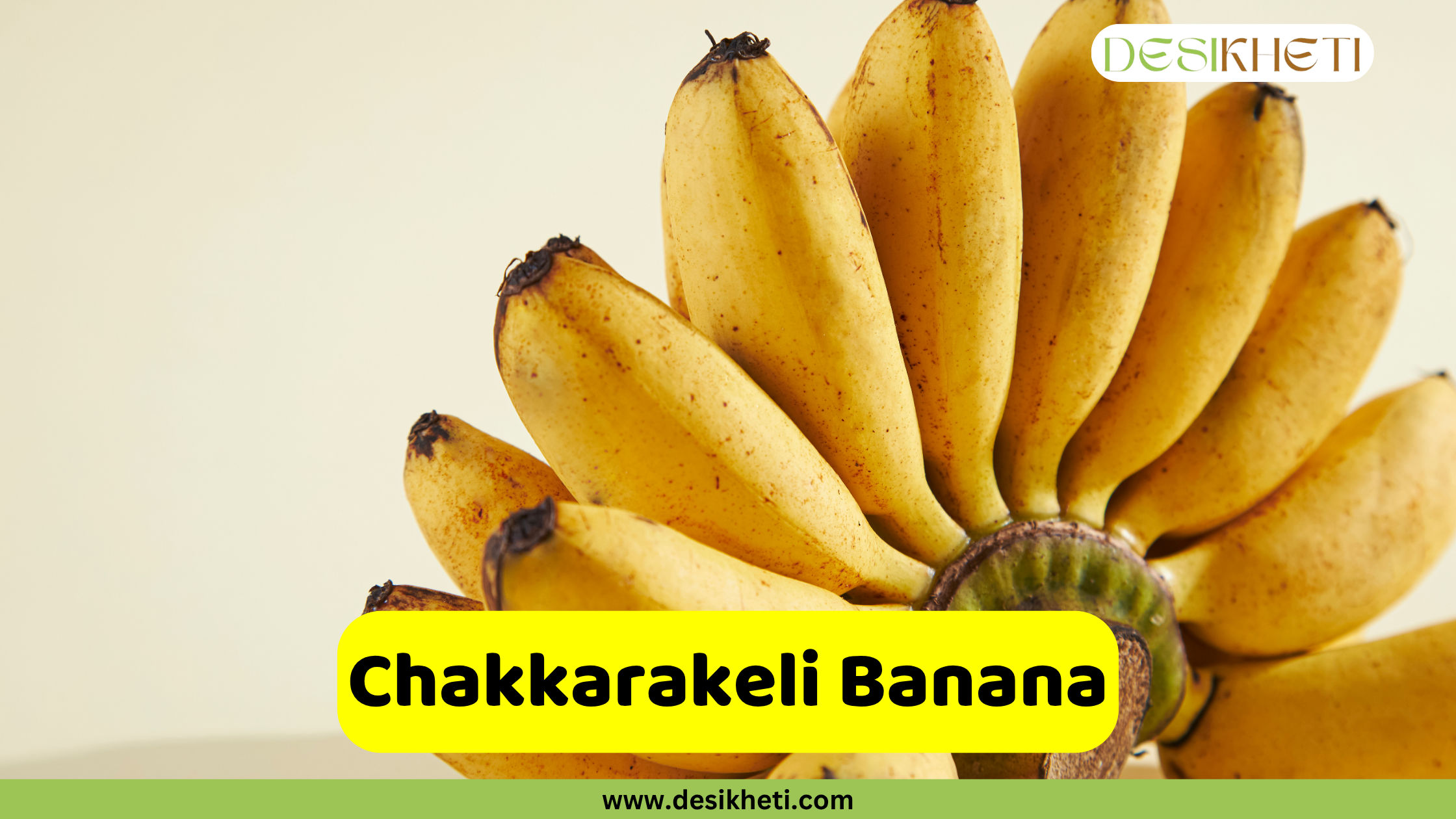
Musa AAB – Silk subgroup
Also known as Shakkarakeli, Champa, or Amrit Sagar, this variety is native to South India. The name “Chakkarakeli” translates to “sugar banana,” perfectly describing its natural sweetness.
It is widely cultivated in Andhra Pradesh, Telangana, Tamil Nadu, and Odisha. The fruits are medium-sized, slightly curved, with bright yellow skin and creamy, golden-white flesh.
Uses and Benefits:
- Used in sweets like banana halwa
- Offered during festivals and poojas
- Naturally sweet and easy to digest
Poovan Banana
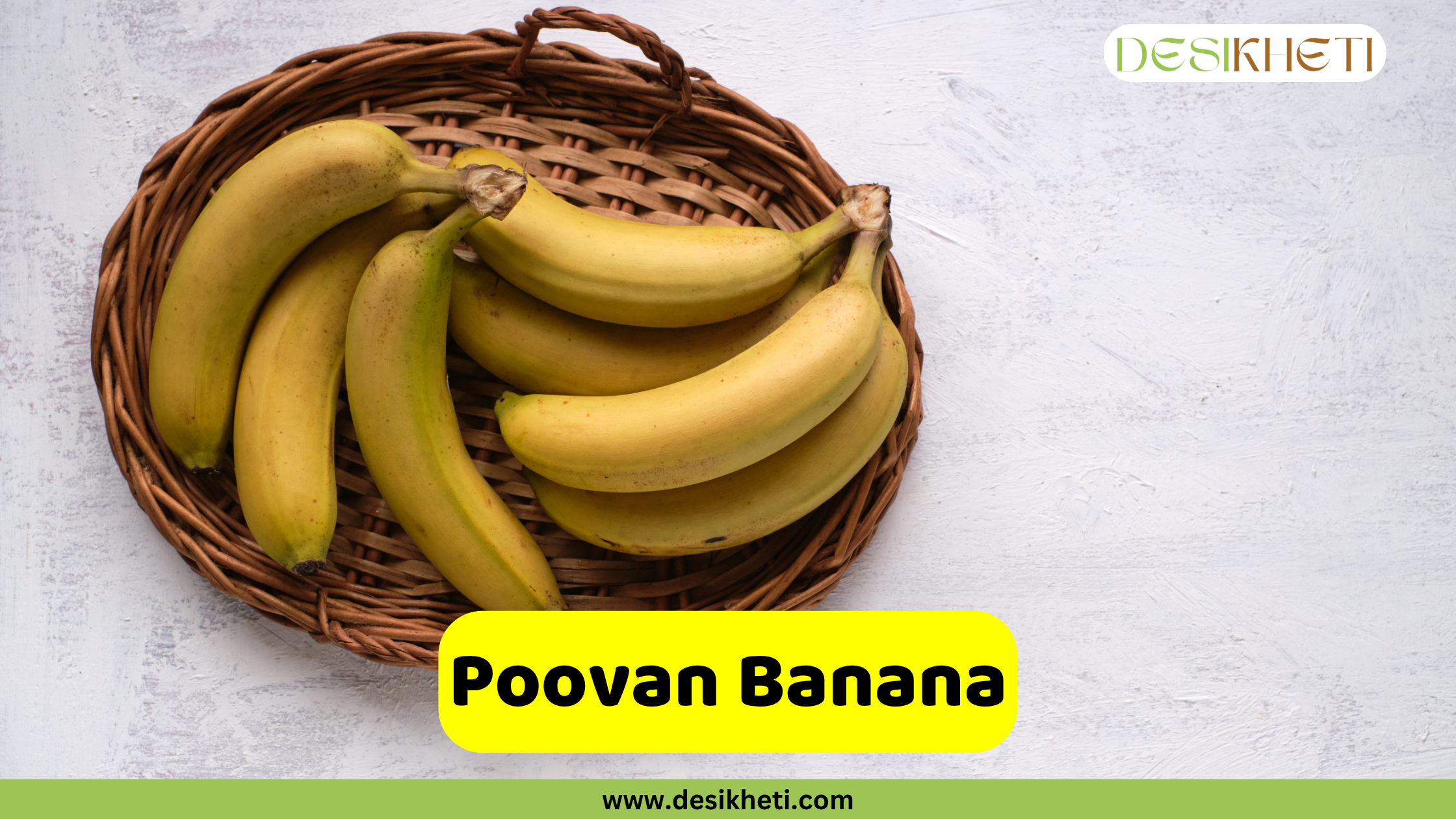
Musa AAB – Mysore subgroup
Also known as Poovan Pazham, this banana is medium to small in size, slightly curved, with a sweet fragrance and thin yellow skin. It is widely cultivated in Tamil Nadu, Kerala, Andhra Pradesh, and West Bengal. It is known for its firm texture and pleasing taste.
Uses and Benefits:
- Added to milkshakes, salads, and banana dosas
- Common in sweets like unniyappam and payasam
Robusta Banana
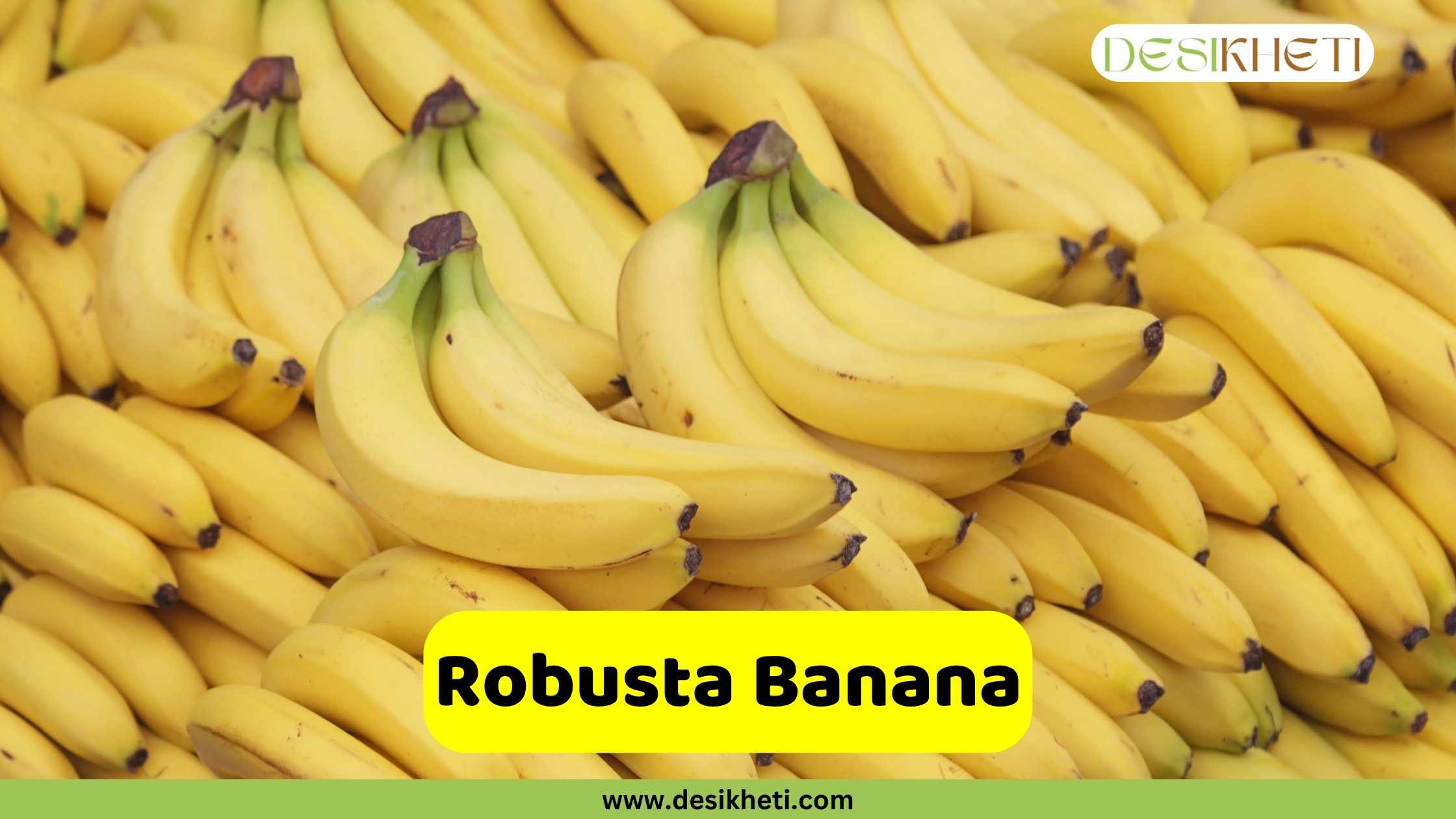
Musa AAA – Cavendish subgroup
The Robusta banana is thick, cylindrical, and commercially significant. It ripens into a bright yellow with creamy flesh and a mild aroma. It is widely cultivated in Maharashtra, Tamil Nadu, Gujarat, Andhra Pradesh, and Karnataka.
Uses and Benefits:
- Perfect for puddings, smoothies, and banana bread
- Long shelf life and suitable for exports
- Common in processed food industries
Dwarf Cavendish Banana
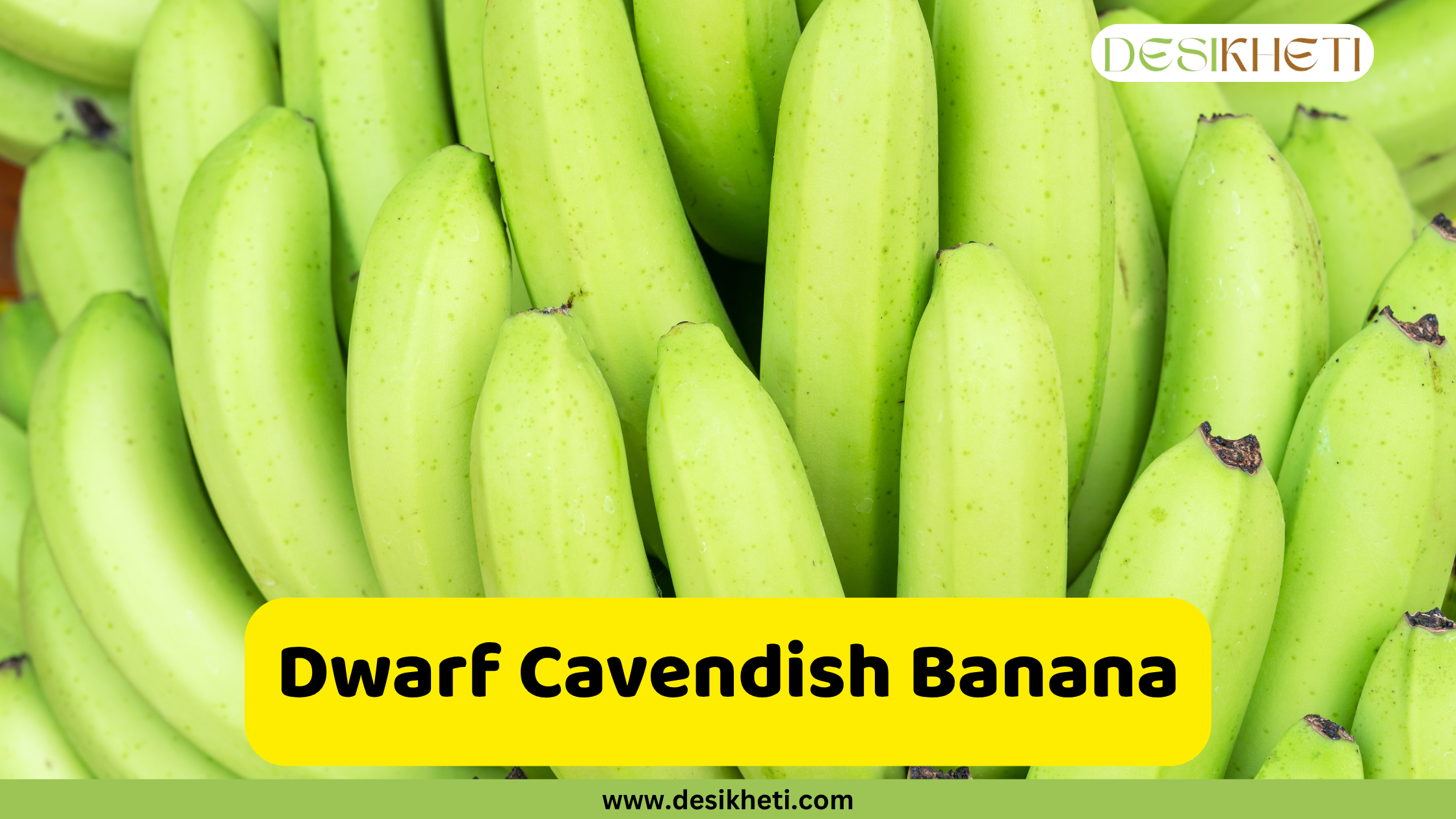
Musa AAA – Cavendish subgroup
Also known as Basrai, this banana is short, thick, and uniform in shape. It is widely used in both global and Indian markets. It thrives under irrigated conditions and is extensively grown in Maharashtra, Gujarat, Andhra Pradesh, and Tamil Nadu.
Uses and Benefits:
- Used in milkshakes, fruit salads, and cakes
- Suitable for tissue culture-based farming
Nendran Banana
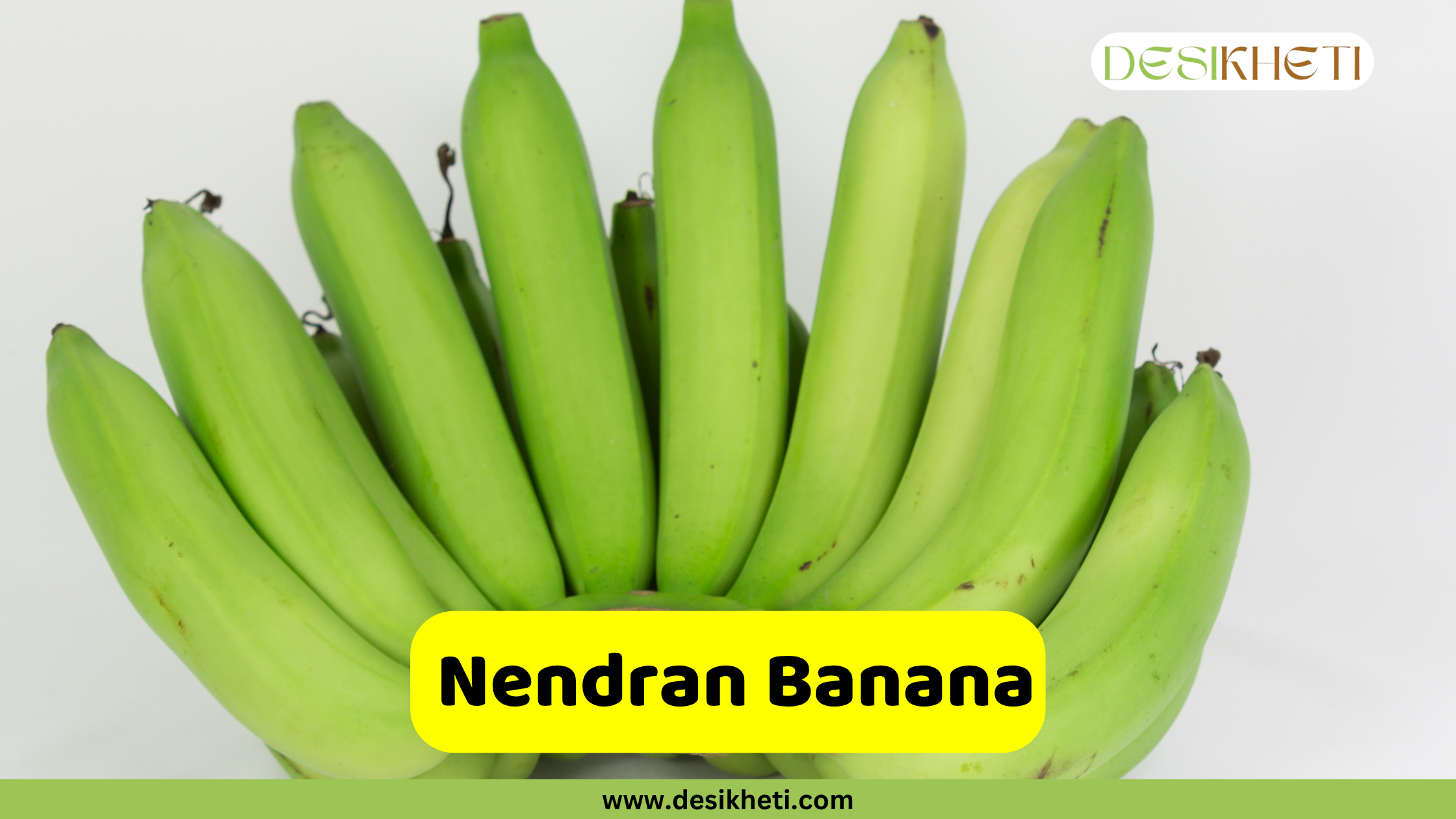
Musa AAB – French Plantain subgroup
Nendran is long, cylindrical, and rich in starch. It is Kerala’s most iconic banana, used in many dishes and for making the famous banana chips. It is also cultivated in Tamil Nadu and Karnataka.
Uses and Benefits:
- Used for making chips, fritters, and traditional dishes
- Can be steamed, boiled, or made into sweets
Red Banana

Musa acuminata – Red Dacca group
This banana is small, with reddish-purple skin and pinkish flesh. It offers a sweet-tangy flavor and is rich in antioxidants and vitamins. Its high beta-carotene content gives it its distinctive reddish hue. It is grown in Tamil Nadu, Kerala, Andhra Pradesh, and parts of Northeast India.
Uses and Benefits:
- Enjoyed raw or used in curries and baked goods
- High in beta-carotene and vitamin C
Monthan Banana
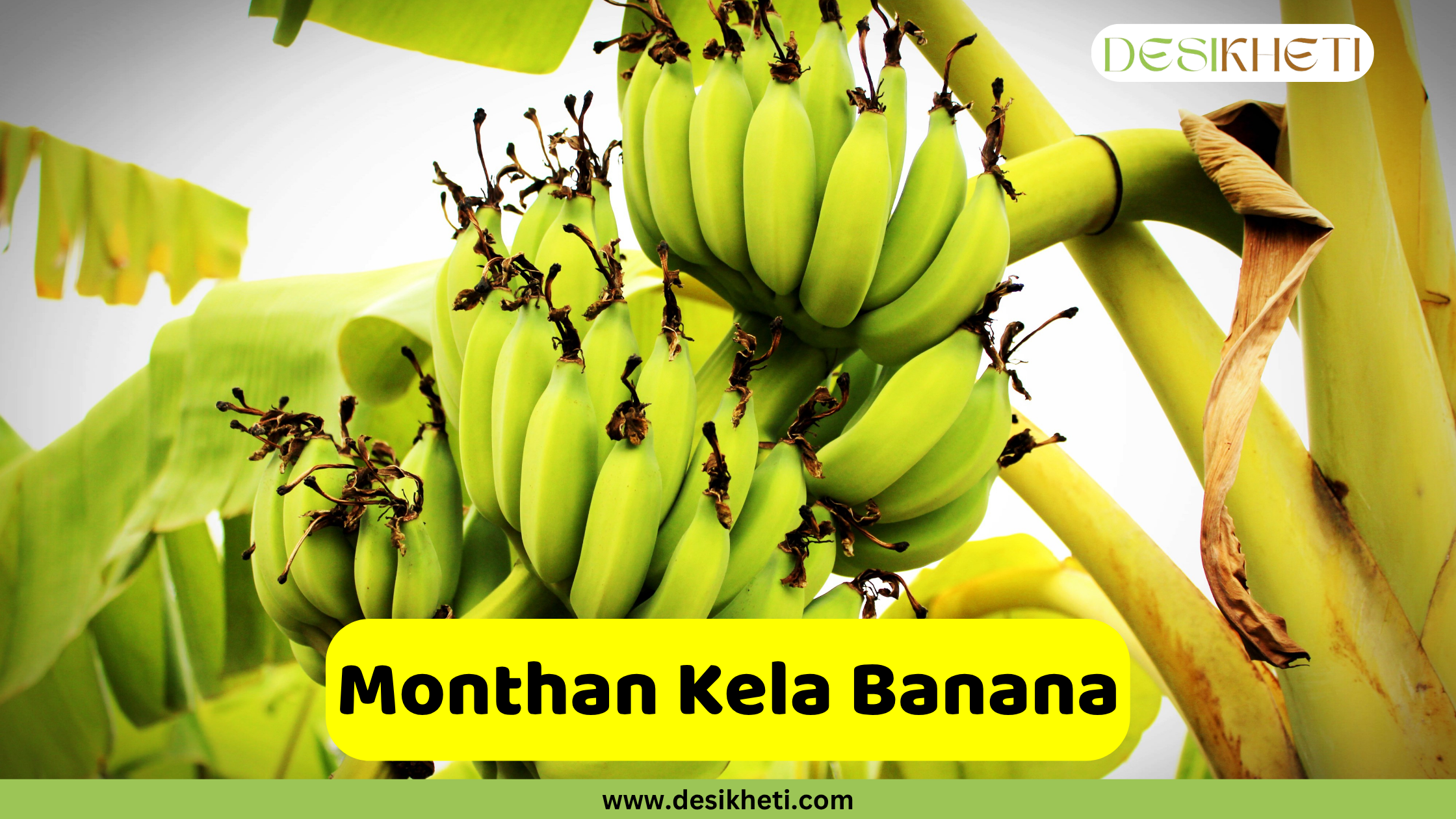
Musa ABB
Also known as Monthan Kela, this banana is long and thick-skinned. It is ideal for cooking due to its firm, creamy flesh. It is a kitchen staple in Kerala and Tamil Nadu.
Uses and Benefits:
- Used in aviyal, kalan, and banana fritters
- Excellent for boiling and steaming
- High in starch and very filling
Rasthali Banana
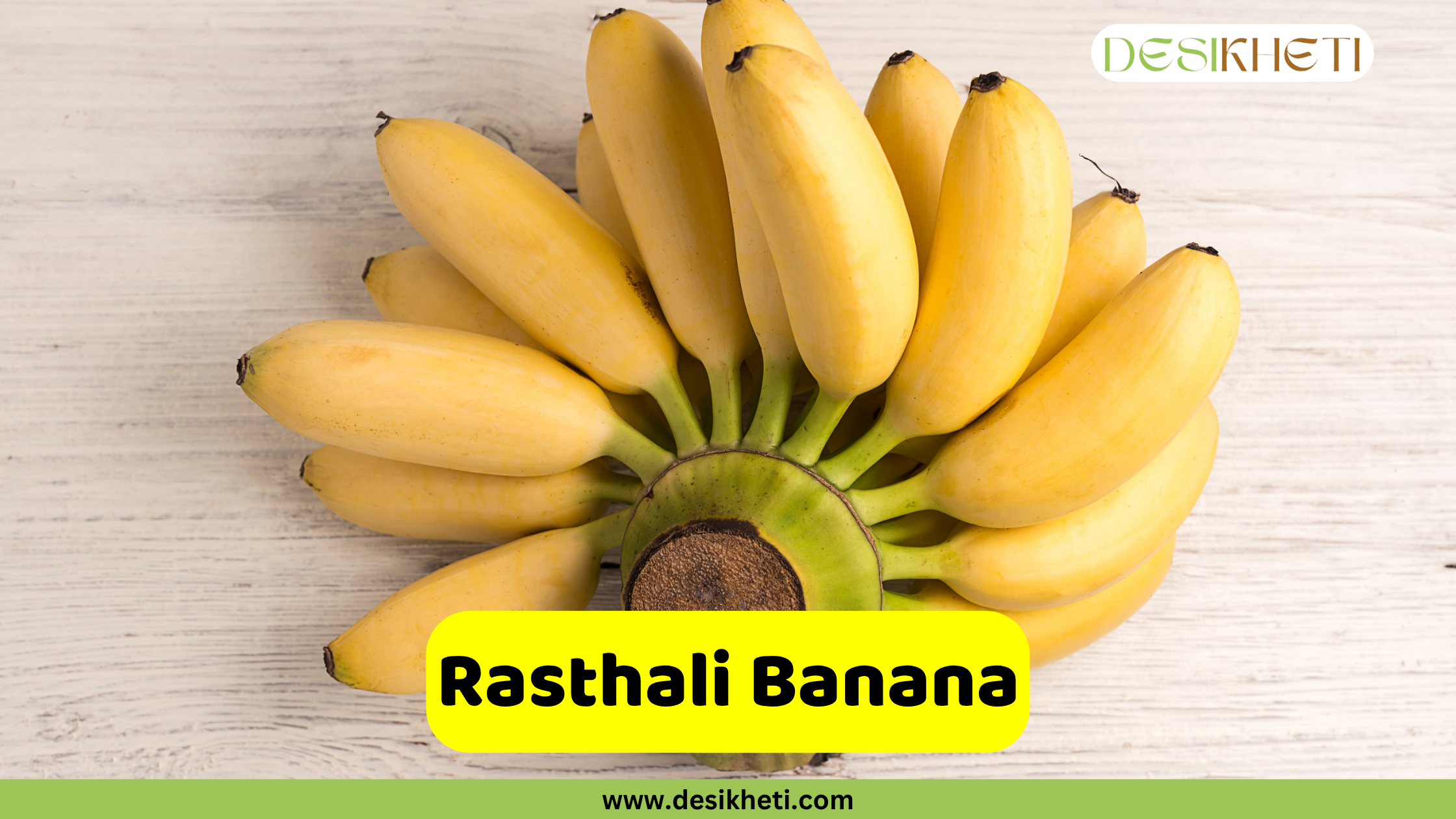
Musa AAB – Silk subgroup
This banana is medium-sized, featuring bright yellow skin and creamy flesh with a strong aroma. It is cultivated in Tamil Nadu, Kerala, Andhra Pradesh, and Karnataka.
Uses and Benefits:
- Used in payasam, smoothies, and milkshakes
- Often served with jaggery, yogurt, or coconut
Karpuravalli Banana
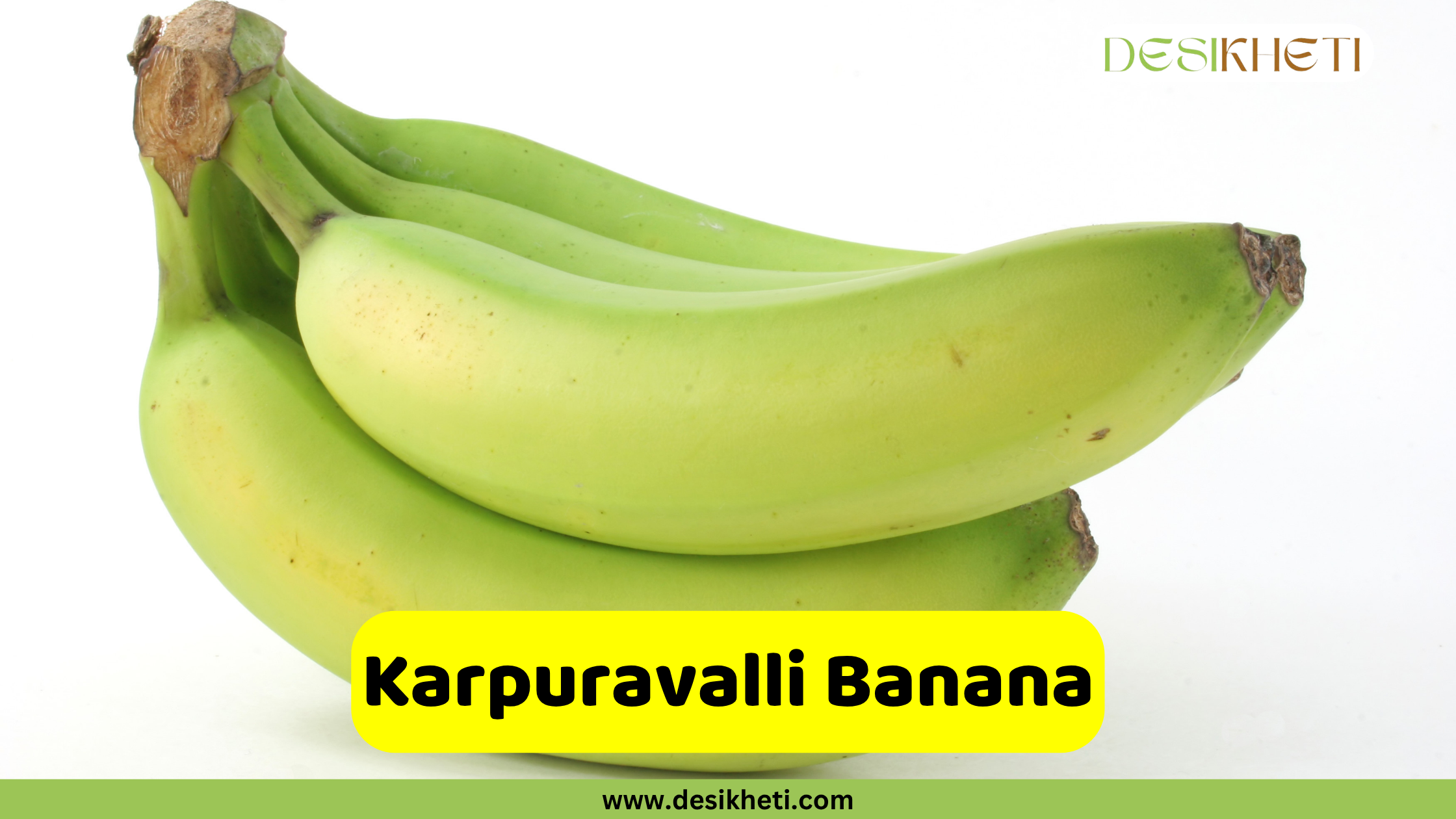
Musa AAB
This aromatic banana is medium-sized, with a golden-yellow peel and a rich, sweet flavor. It is grown mainly in Tamil Nadu, Kerala, Andhra Pradesh, and Karnataka.
Uses and Benefits:
- Featured in payasam and steamed desserts
- High in dietary fiber
Basrai Banana
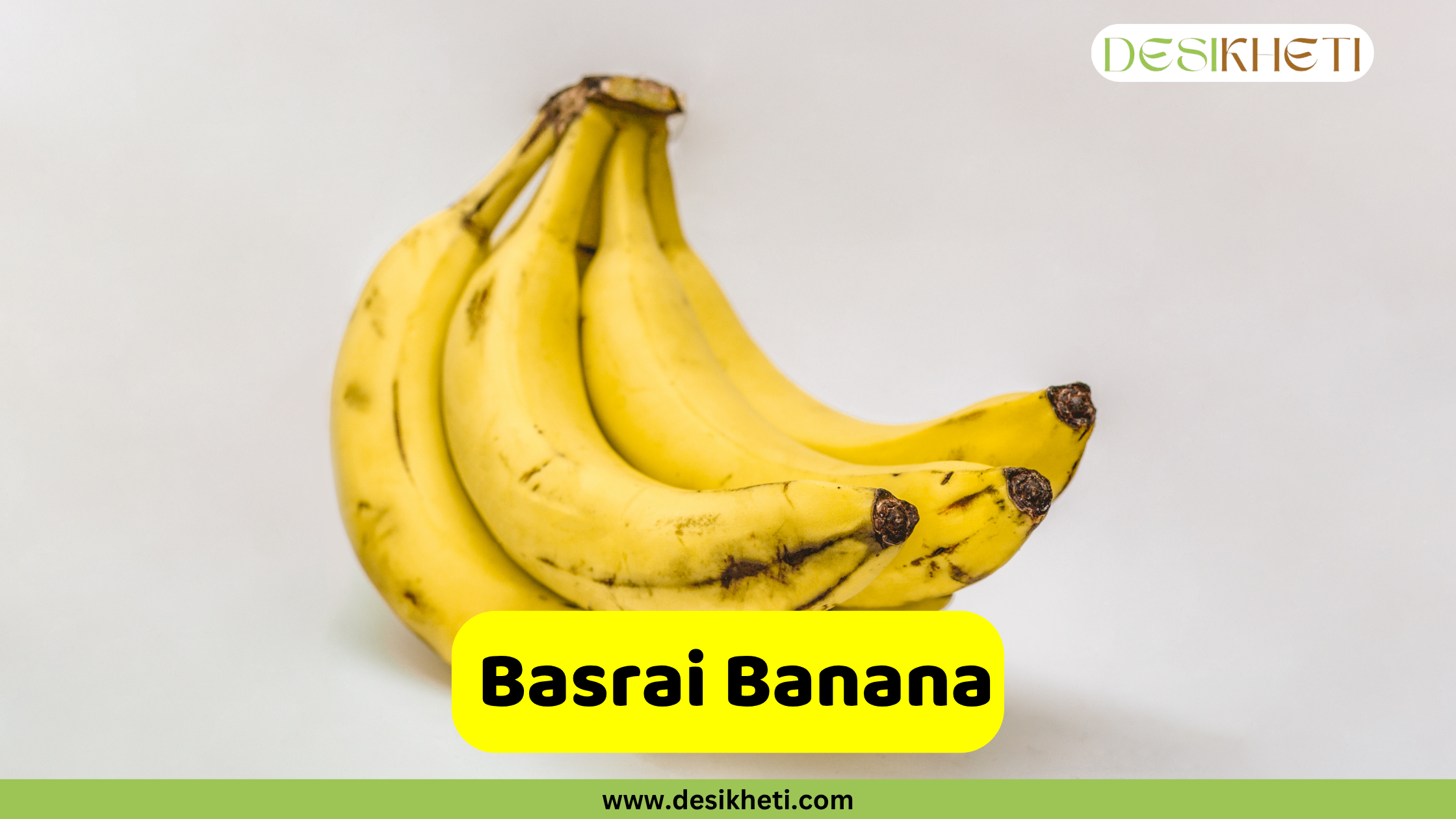
Musa AAA – Cavendish subgroup
This small to medium-sized banana has a straight shape and thin peel. It is widely grown in Maharashtra and Gujarat.
Uses and Benefits:
- Good for smoothies, snacks, and desserts
- Used in chips, fritters, and sweets
- Easily digestible and high in potassium
Growing Tips & Care for Bananas
Bananas are tropical plants that thrive with the right mix of warmth, water, and nutrition. Whether you’re a backyard gardener or a farmer, proper care ensures healthy growth and high yields. Here are some key tips to help you grow bananas successfully in Indian conditions:
- Choose the Right Variety: Select a banana variety suitable for your region’s climate, soil, and purpose dessert, cooking, or processing. Popular choices include Robusta, Dwarf Cavendish, Nendran, and Poovan.
- Ensure Proper Sunlight: Bananas love the sun! Choose a location that receives at least 6–8 hours of direct sunlight daily. Insufficient light can reduce yield and affect fruit development.
- Use Well-Drained, Fertile Soil: Bananas grow best in loamy, well-drained soil rich in organic matter. Avoid waterlogged or heavy clay soils. Maintain a soil pH between 6.0 and 7.5.
- Water Regularly and Deeply: Banana plants require consistent moisture, especially during flowering and fruiting stages. Irrigate deeply once every 2–3 days in summer and reduce the frequency in cooler months. Avoid water stagnation.
- Feed with Organic Nutrients: Apply organic compost, cow dung, or green manure before planting and at intervals. Balanced NPK fertilizers, especially high in potassium, support fruit development. Foliar sprays of micronutrients can further boost plant health.
- Maintain Proper Spacing & Suckers: Space plants 6–8 feet apart to ensure good airflow. Retain 1–2 healthy suckers per mat, and remove the unwanted ones regularly to prevent overcrowding.
- Mulch and Weed Control: Apply organic mulch (like dried leaves or straw) around the base to retain moisture and suppress weeds. Regularly remove weeds to minimize competition for nutrients.
- Protect from Wind and Cold: Banana plants are sensitive to strong winds and low temperatures. Use windbreaks in open areas. In colder regions, plant during warmer seasons or protect young plants with covers.
- Monitor for Pests & Diseases: Watch for banana aphids, weevils, nematodes, and fungal infections like Panama wilt or Sigatoka leaf spot. Use neem oil, organic pesticides, or follow integrated pest management (IPM) practices.
- Harvest at the Right Time: Bananas are usually ready 8–10 months after planting, depending on the variety. Harvest when the fingers are plump, fully filled out, and the ridges start to smoothen. Post-harvest, allow ripening at room temperature or in ripening chambers.
Banana Fun Facts
- Bananas Are Berries, but Strawberries Aren’t! Botanically, bananas qualify as berries.
- The Banana Plant Is a Giant Herb. The “trunk” is actually a pseudostem made of leaf bases.
- Bananas Float in Water. Their density is lower than that of water.
- Bananas Can Boost Your Mood. They contain tryptophan, a precursor to serotonin.
- Banana peels have multiple uses, including cleaning silver, soothing insect bites, and polishing leather.
Bananas play an essential role in India’s agriculture, cuisine, and traditions. Each variety offers something special whether it’s a unique flavor, nutritional benefit, or culinary versatility. Understanding these popular banana types, along with their cultivation regions and uses, can help farmers, sellers, and consumers make informed choices.
FAQs on Bananas
1. What is the use of Chakkarakeli banana?
A. Chakkarakeli bananas are known for their sweet taste and are commonly eaten fresh or used in traditional Indian desserts and offerings.
2. What is the difference between Yelakki banana and Chakkarakeli banana?
A. Yelakki bananas are smaller, more aromatic, and sweeter, while Chakkarakeli bananas are larger with a thicker peel and mild sweetness.
3. How to identify Poovan bananas?
A. Poovan bananas are small to medium-sized with a thin peel, slightly tangy flavor, and a distinctive aroma when ripe.
4. What vitamins are in Robusta bananas?
A. Robusta bananas are rich in vitamins B6 and C, and contain small amounts of vitamin A and folate.
5. What is special about Nendran bananas?
A. Nendran bananas have firm, starchy flesh and are prized for cooking, especially in Kerala for chips and steamed dishes.
6. How to know if a Nendran banana is ripe?
A. It turns yellow-orange when ripe and yields slightly to pressure, though it remains firmer than other bananas.
7. What is special about red bananas?
A. Red bananas are rich in antioxidants, vitamin C, and beta-carotene, and have a sweet raspberry-like flavor.
8. What do Monthan bananas taste like?
A. Monthan bananas have a starchy, mildly sweet taste and are often used for cooking.
9. What is the other name for Rasthali banana?
A. Rasthali is also known as Silk Banana due to its smooth texture.
10. What is the other name of banana Karpuravalli?
A. Karpura Vazhai, Kostha Bontha, Boodi Bale, Kanthali, Boodida Bukkisa, and Banria are a few other names for the banana Karpuravalli.
11. How many days does a banana tree take to grow?
A. Banana plants typically take 9–12 months to grow and produce fruit after planting.
